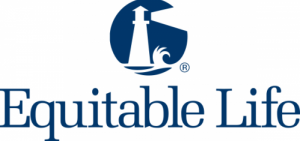Registered Retirement Saving Plan (RRSP)
RRSPs & TFSAs
Tax Free Savings Accounts (TFSAs) were introduced in 2009 and they seem to be struggling to catch on. Registered Retirement Savings Plans (RRSPs), however, have been around for over fifty years and attract billions of dollars of deposits each year. If you are serious about saving for your future, it is important to know the differences between the two.
While RRSPs and TFSAs seem to be very similar on the surface, they are really apples and kumquats apart. The only similarity is that, within limitations, earnings inside either plan are allowed to grow without current taxation.

Deposits
Contribution limits to an RRSP are based on a percentage of income of the preceding year to an annual maximum, plus any unused contribution room, minus a pension adjustment. So, the maximum contribution for 2020, ignoring unused room and pension adjustments, is 18% of 2019 income to a maximum of $27,230. Any contributions made to an RRSP are deductible from income for the tax year you choose.
There are no income requirements to make a deposit to a TFSA because deposits cannot be deducted from income. The limit is currently $5,000 per year and any unused portion of this limit can be carried forward and used in another year.
Withdrawals
RRSPs are a tax-postponed savings plan. When withdrawals are made, they are fully taxable in the year they are received at whatever the tax rate is for the plan holder.
Income arrangements from an RRSP must be made before the end of the year in which the plan holder turns age 71. There are also minimum amounts that must be withdrawn each year and these minimums increase each year.
TFSAs are a truly tax-free plan for saving money. Withdrawals are not taxed and actually get added back to contribution room. For example, John contributed $5,000 each year since 2009. He has no contribution room left. He makes a withdrawal of $6,000 for his dream vacation in 2012. This means that in 2013 he can contribute $11,000 to his TFSA.
You can keep a TFSA for as long as you want. Unlike RRSPs, you will not be forced to take an income or withdraw funds from your TFSA at a certain age.

Government Benefits
Because income from an RRSP shows up on a tax return, it may affect government benefits such as Old Age Security (OAS). Withdrawals from a TFSA are fully tax free and will not cause a reduction in OAS benefits. For some, this means they may qualify for the Guaranteed Income Supplement (GIS) even though they are receiving an income from their TFSA.
RRSPs and TSFAs are different animals. They each have distinct features and benefits that will affect people in different ways. Both of these tax preferred plans can play a role in your future.
Registered Retirement Income Funds
It is required by the Income Tax Act that a Registered Retirement Savings Plan (RRSP) must be closed by the end of the year in which the planholder (annuitant) reaches age 71. At that time, the annuitant must decide what to do with their retirement savings. They have three options – cash in the RRSP, buy an annuity, or convert to a Registered Retirement Income Fund (RRIF).
While an RRSP is intended to accept deposits, a RRIF is intended to provide the annuitant with a regular, systematic income. The income received from a RRIF is fully taxable. Like an RRSP, the growth is still tax-deferred.
A RRIF can actually be started at any age, but new contributions cannot be made directly into a RRIF. Money gets into a RRIF through a rollover from an RRSP, and no taxes are payable on these rolled over funds.
Once a RRIF is started, a minimum amount must be withdrawn each year by the annuitant. No minimum withdrawal is required in the year the RRIF is established. For example, Ed will turn age 71 in 2010 and converts his RRSP to a RRIF, but his income doesn’t actually have to start until 2011. The minimum income that Ed needs to receive from his RRIF in 2011 is calculated by multiplying his account value on December 31, 2010 by an age factor stipulated by the Income Tax Act.
The annuitant has the option of basing the minimum annual withdrawal amount on the age of their spouse. For example, John turns age 71 in 2010, but his wife Donna is only 65. By using Donna’s age to determine the RRIF minimum, they would be required to withdraw a lesser amount than if they used John’s age. This is an opportunity to postpone taxes longer on the RRIF balance.
Although RRIF withdrawals are fully taxable, only amounts in excess of the yearly minimum are subject to withholding taxes. But, any withdrawals made in the year the RRIF is started are subject to full withholding at source. Rose elected to have 25% of her RRIF income remitted to Canada Revenue Agency (CRA) on her behalf so she wouldn’t be surprised by a tax bill in the spring.
While the basic RRIF rules apply to spousal plans as well, income from a spousal RRIF may be taxed in the contributor’s hands in certain situations. For example, Doug had made contributions to Sally’s RRSP up until she started taking a RRIF income. Because deposits were made to Sally’s RRSP in the current and previous two years, withdrawals in excess of the RRIF minimum will have to be included on Doug’s tax return. She chose to take the RRIF minimum for now.










